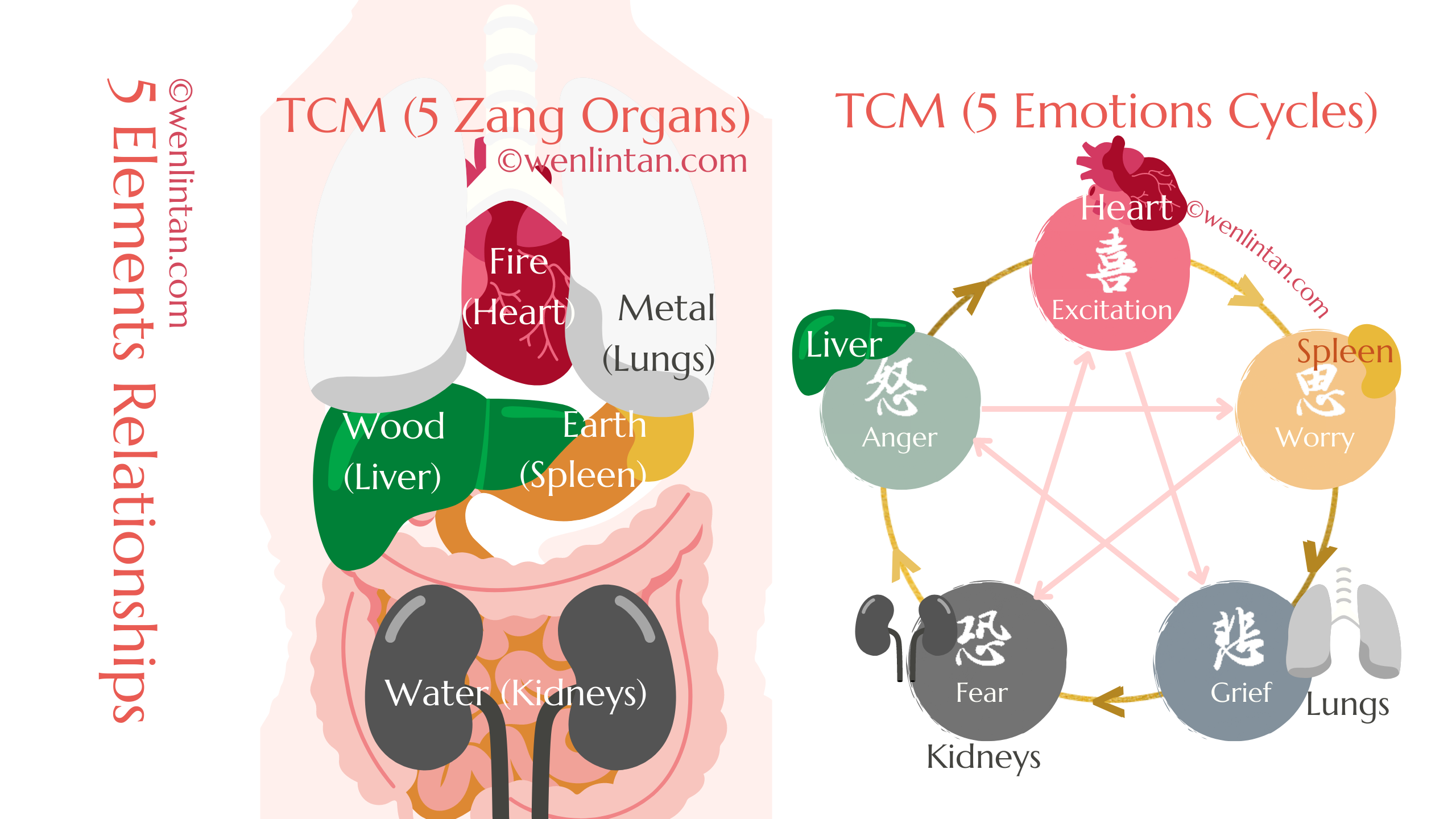Five Elements Relationships in TCM (Traditional Chinese Medicine)
Depicted below are the Five Elements Relationships showing how the Wuxing 五行 (Five Moving Forces / Dynamics / Phases / Energetic qualities) which are Wood 木, Fire 火, Earth 土, Metal 金 and Water 水 are related to phenomena and transitions in the external world and internal world.
In TCM (as well as Ayurveda, which has a similar Five Element theory), it is believed that Five Elements manifest not just as inanimate things, forms in nature but are also energies, forces, phases and cycles that underpin each individual’s life stages.
Some of the most key relationships are that of the Five Elements with the Zang 藏 organs and their corresponding meridian channels and their corresponding emotions.

Ancient texts such as the Huang Di Nei Jing 黄帝内经 and Bai Hu Tong 白虎通德伦 have established relationships of these forces with smells, sounds, colours, directions, senses, seasons, emotions and interestingly, even virtues.
The key here is not to get lost in the specific connections, but to realise this points to the fact that everything is rooted in the Five Elements, and thus interconnected. If you are new to the Five Elements or if this table feels overwhelming or difficult to make sense of, read this introduction to the Five Elements first.
Want to harness the energies of the Five Elements?
Find out more about Five Element Coaching with me here. On my resources page you can find a free Five Element Qigong Healing & Protection Meditation to help you dissolve difficult negative emotions and uncover your inner power, and a podcast interview on the Five Elements of Ayurveda and Chinese Medicine.
